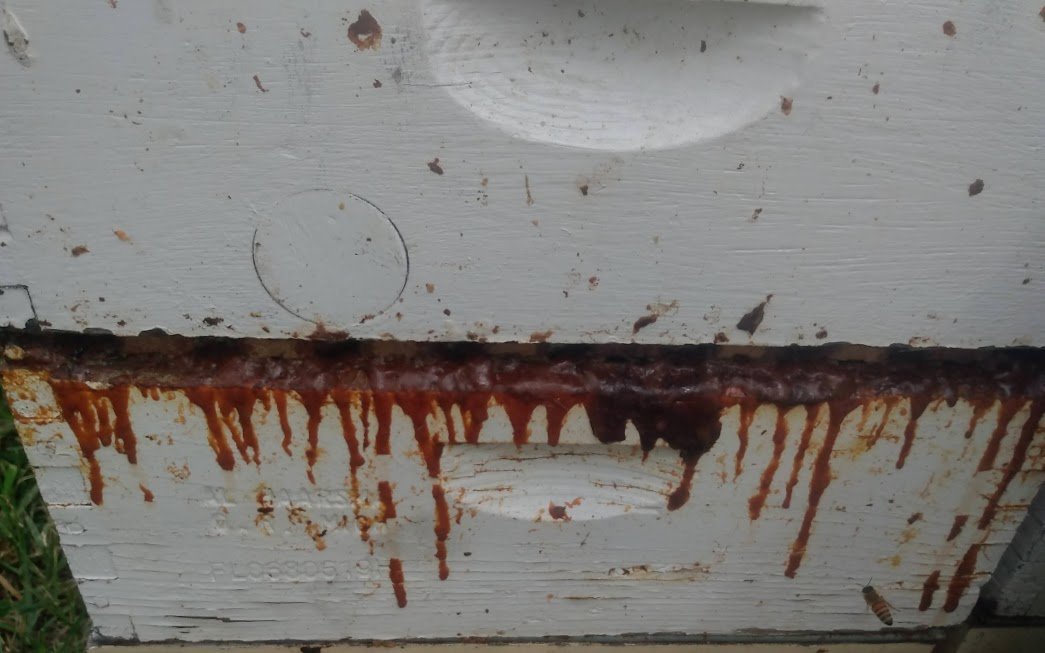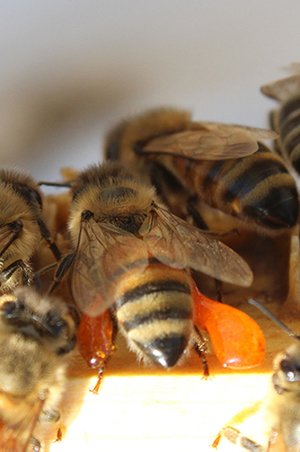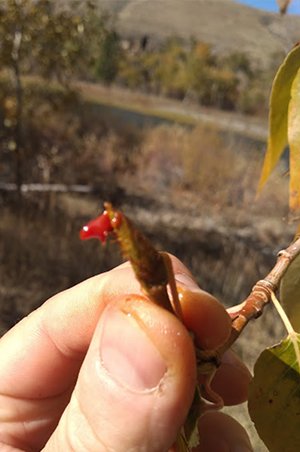Propolis - pro- "for", -polis "the city"
Along with pollen, nectar, and water, honey bees collect resins from plants and trees. The bees load these sticky resins into the pollen baskets on their hind legs and carry them back to the hive. Once they enter the hive, we call these resins propolis. Pro- means for, or in front of, and -polis means the city, and indeed propolis is used to protect the “city” of bees.
Propolis can be used to smooth rough surfaces and seal crevices, which allows the colony to control airflow and maintain homeostasis inside the hive. Propolis has also been found to have antimicrobial properties. When a colony is sick, bees collect extra propolis to fight off infection. In this way, propolis use by honey bees can be considered an example of social immunity: a collective behavior that benefits the health of the colony as a whole.
In the Minnesota, honey bees collect resins mostly from Populus tree species such as the Cottonwood tree and the Balsam Poplar.
Honey bees aren’t the only bees to use resins in their nest. Many species of solitary bees use resins to line the small cavities where they lay their eggs. Stingless bees, a diverse group of social, honey-producing bees found in tropical areas, also incorporate propolis into their nest environment.
People have taken advantage of the medicinal properties of propolis for ages, using propolis tinctures to treat coughs and colds, and for a variety of other ailments. However, propolis has also long been considered a sticky inconvenience, gumming up beekeepers’ equipment and spreading its stickiness everywhere. However, as beekeepers and researchers learn more about the importance of propolis to bee health, beekeepers are developing new strategies to invite propolis back into the colony environment. See the propolis research page for more information!



